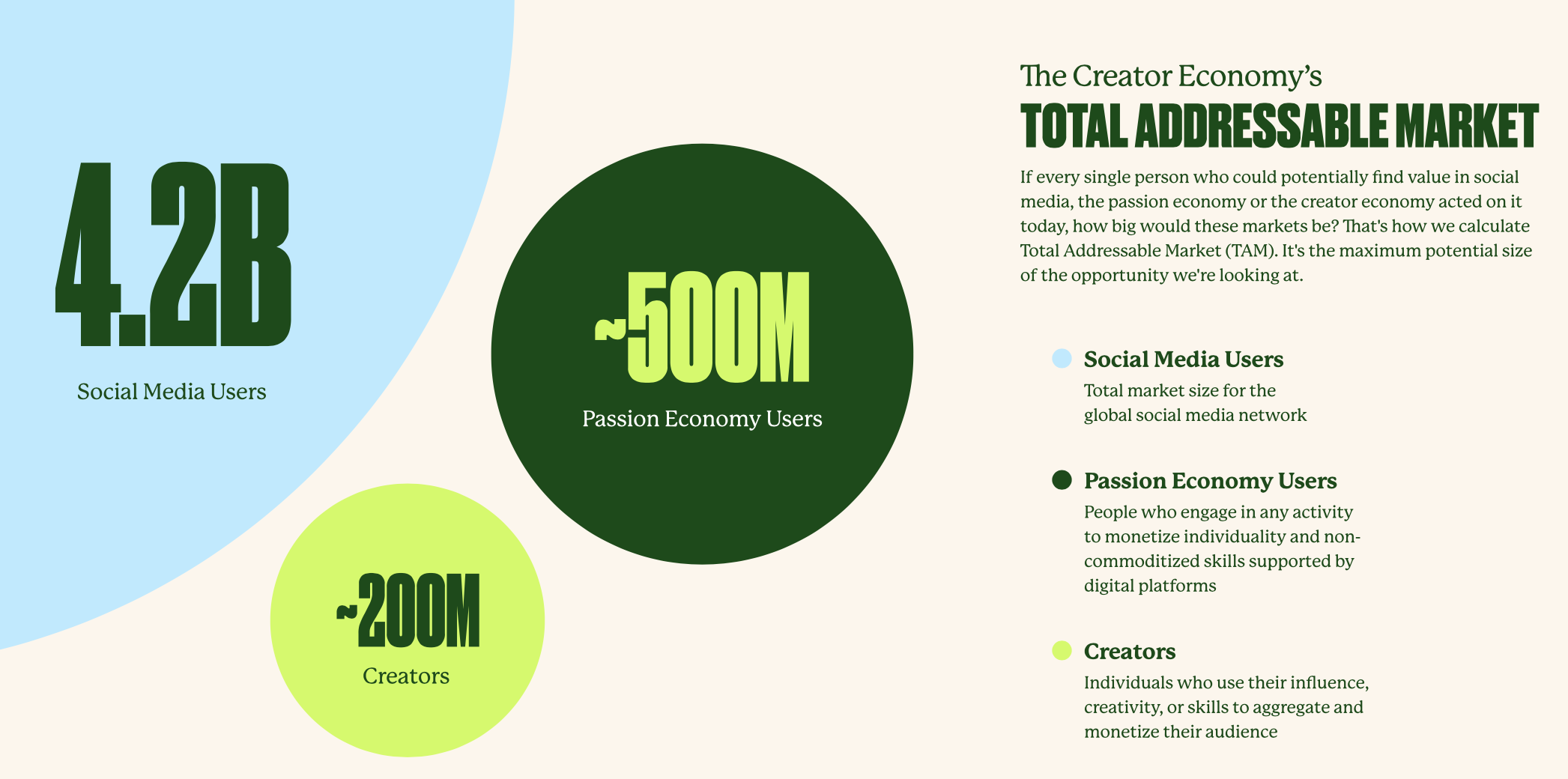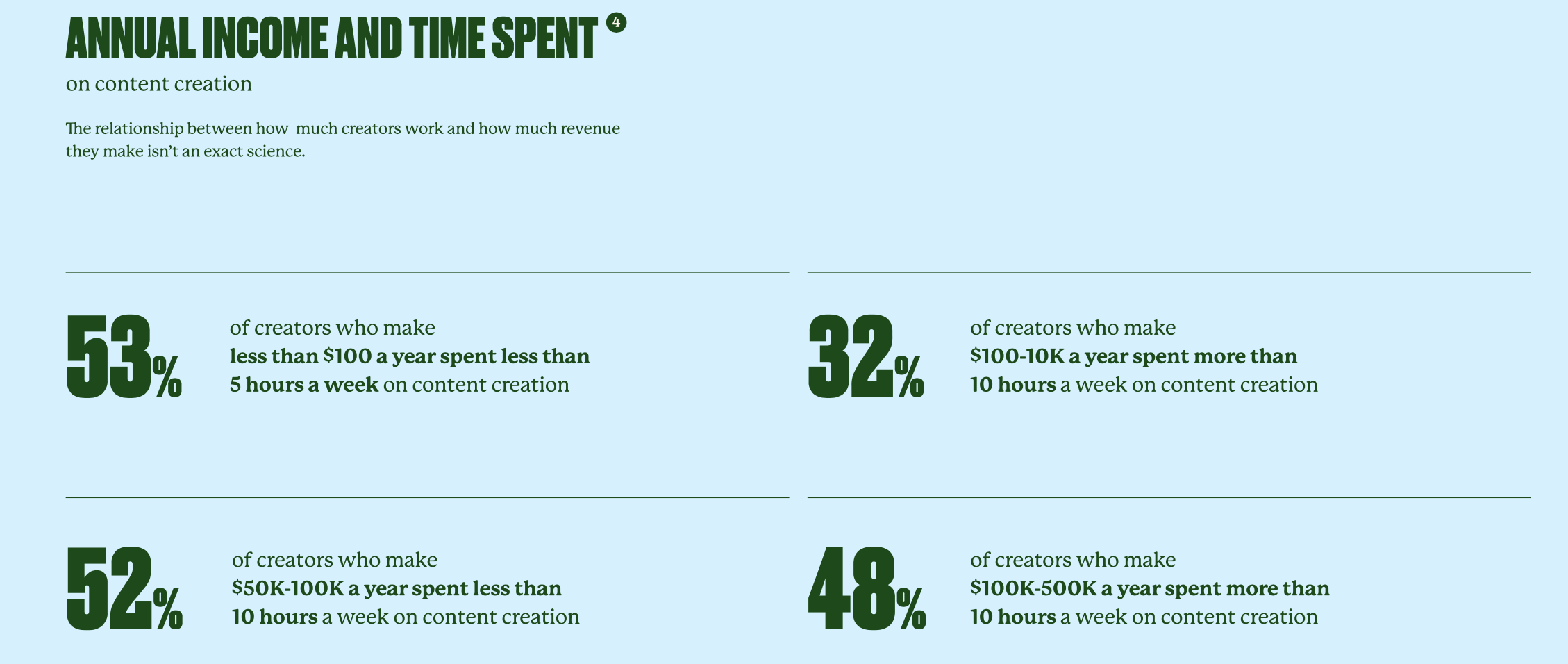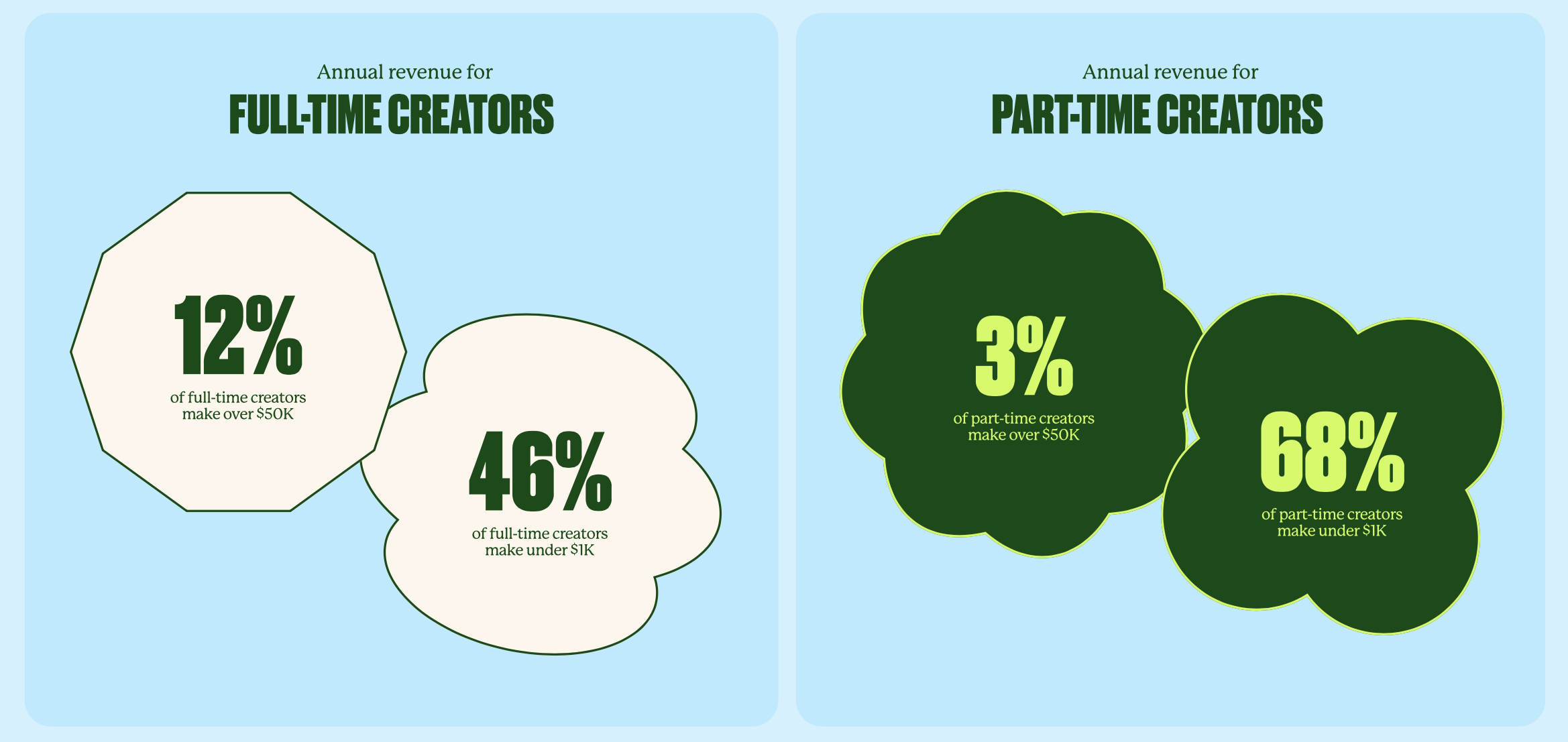
READ MORE: CREATOR REPORT (Linktree)
The worldwide population of the creator economy is estimated to be 200 million, according to a new report by link-in-bio resource Linktree.
The creator economy encapsulates those individuals making money from selling content on social media, but it doesn’t mean those creators are taking home millions of dollars.

In fact, Linktree’s report notes that the majority of the creator economy consists of “semi-pro” creators who have between 1,000 and 10,000 followers.
Linktree says that 70% of creators earn less than 10% of their income from partnerships with brands. The majority of the 9,500 creators it surveyed have not engaged in any brand deals at all, and even among those who do, the majority take home less than $100 per paid post.
In its report, Linktree quoted TikTok creator Kitty Cat Matt. “The biggest monetization challenge is deciding what opportunities align with my content standards,” he said. “Money takes a back seat to my long-term goals.”
Two-thirds of the creators in Linktree’s sample consider themselves to be “niche creators.” That means they serve viewers who have a deep interest in a unique subject.
“This research underscores how difficult it can be to be a creator, and just how important it is for creators to find partners, platforms, and services that streamline monetization opportunities.”
— Eric Jacks, Collab
Since niche creators home in on specific topics, it can be easier for them to negotiate the branded content landscape. According to Linktree’s report, the nouveau niche are 2% more likely to earn six figures per year, and they’re 11% more likely to have posted at least one piece of branded content.
More than a third of the creators it analyzed have only been making content for a year or less, and among those “beginner creators,” only 6% have made more than $10,000 from their work. 59% of them haven’t turned on monetization at all.

“It’s almost as if those up-and-comers could use a link-in-bio service to help them make money,” as Sam Gutelle of Tubefilter pointedly observes.
“Only 12% of the full-time creators Linktree studied make more than $50,000 per year. Maybe that’s why so many of them are burned out — Linktree stated that 13% of full-timers are ‘extremely/consistently stressed.’ ”

READ MORE: 200 million people are earning money from digital content creation (Tubefilter)
Emerging channels like Twitch, OnlyFans, TikTok, and longtime favorites like Reddit and Snapchat all offer growth opportunities. Beginner creators are more likely to have their largest communities on these platforms than experienced creators. For example, 12% of beginner creators consider TikTok as their biggest platform (vs. 6% of experienced creators); and 16% of beginner creators consider Facebook their biggest platform (vs. 22% of experienced creators).
Los Angeles-based creator platform Collab provided a reaction to the “2022 Creator Report” to Tubefilter. “68% of part-time creators make less than $1,000,” said Collab’s chief strategy officer, Eric Jacks. “This research underscores how difficult it can be to be a creator, and just how important it is for creators to find partners, platforms, and services that streamline monetization opportunities.”

CRUSHING IT IN THE CREATOR ECONOMY:
The cultural impact a creator has is already surpassing that of traditional media, but there’s still a stark imbalance of power between proprietary platforms and the creators who use them. Discover what it takes to stay ahead of the game with these fresh insights hand-picked from the NAB Amplify archives:
- The Developer’s Role in Building the Creator Economy Is More Important Than You Think
- How Social Platforms Are Attempting to Co-Opt the Creator Economy
- Now There’s a Creator Economy for Enterprise
- The Creator Economy Is in Crisis. Now Let’s Fix It. | Source: Li Jin
- Is the Creator Economy Really a Democratic Utopia Realized?
Linktree was set up in 2016 to do just this, acting as a gateway to other revenue streams that contribute to monthly income and makes the creators job a little easier.
It’s certainly working. The Melbourne-headquartered company boasts 24 million users (including celebs Selena Gomez, Noah Beck, and Dwayne Johnson) and a recent $110 million VC investment valued it at $1.3 billion.
As Tubefilter points out, when Linktree was founded, its idea was a novel one. It was a company designed to do two things: put a link in your Instagram bio and jam that link full of information, audience engagement tools, and merch pages.
Now, the link-in-bio industry is a busy place, with companies like Pico and Koji integrating hundreds of apps into a single URL.
Linktree cites “influencer,” “small business,” and “music” as three specific categories in which it is rapidly acquiring customers. In total, the firm’s links-in-bio have registered 1.2 billion clicks to commerce-related websites in the past year.




Discussion
Responses (1)